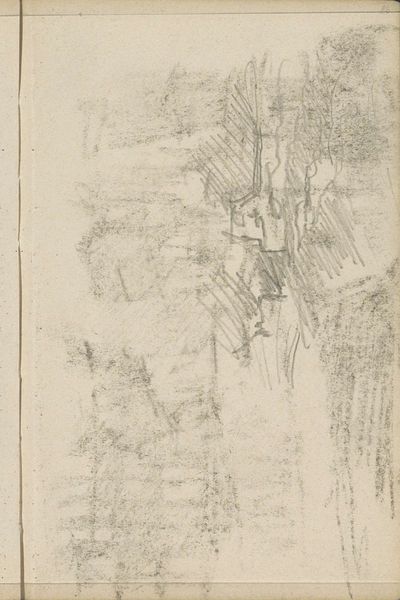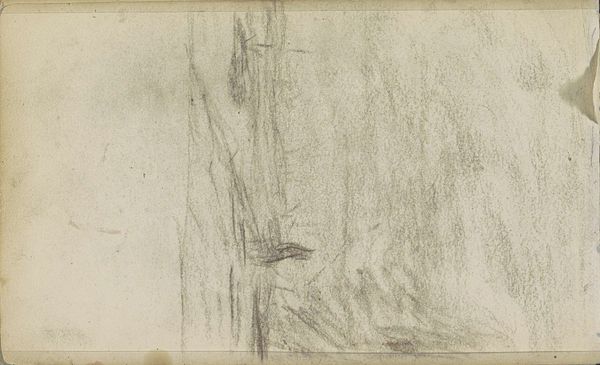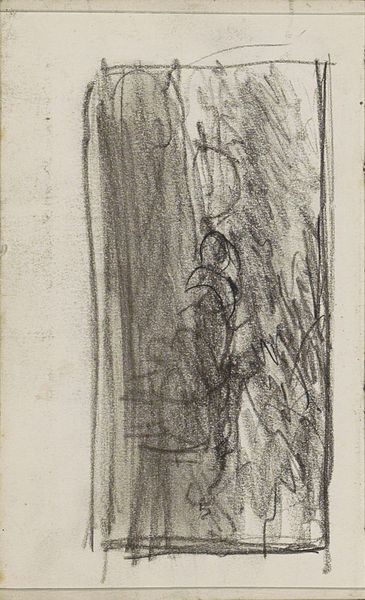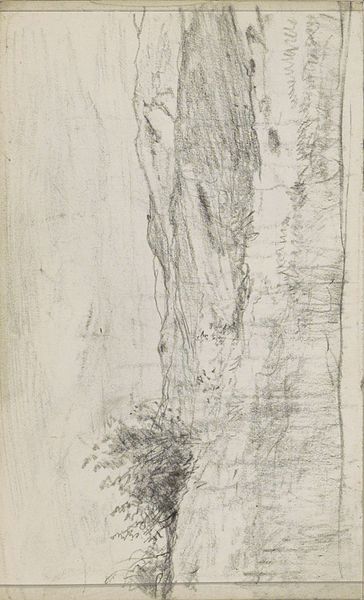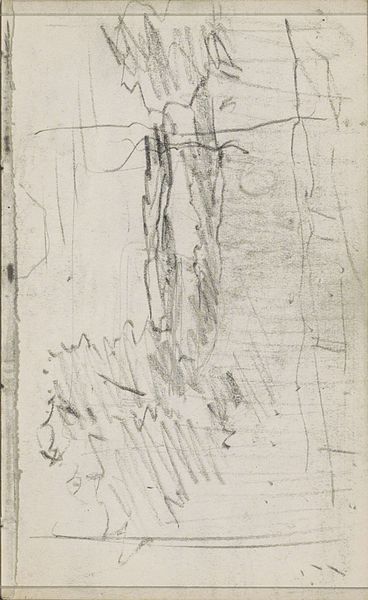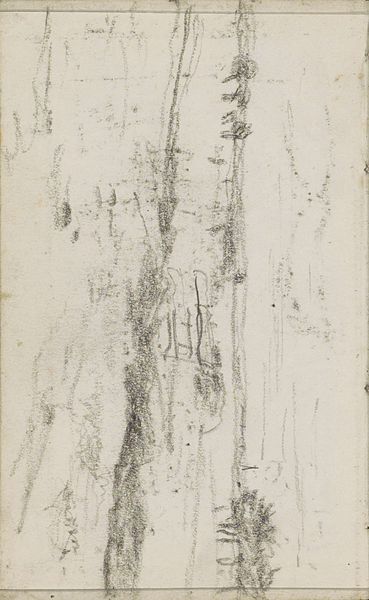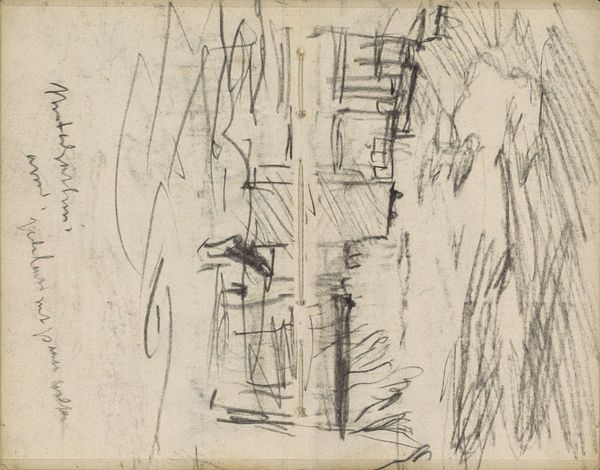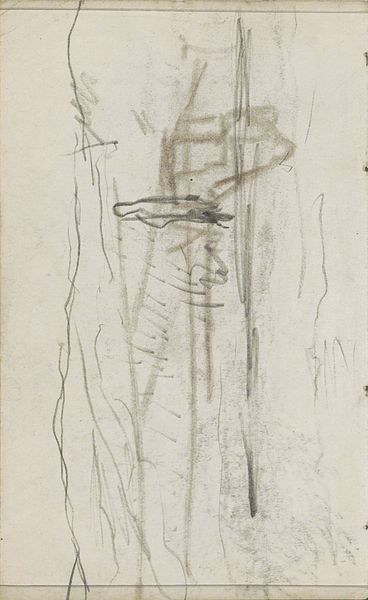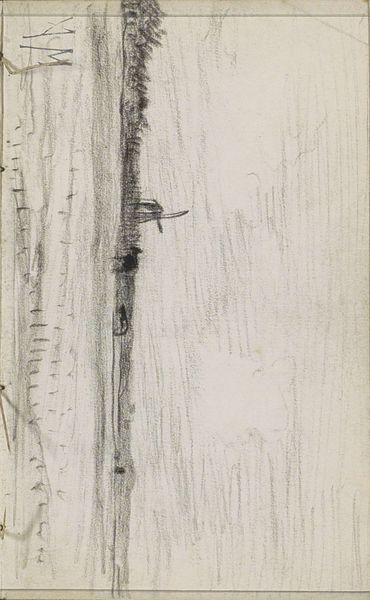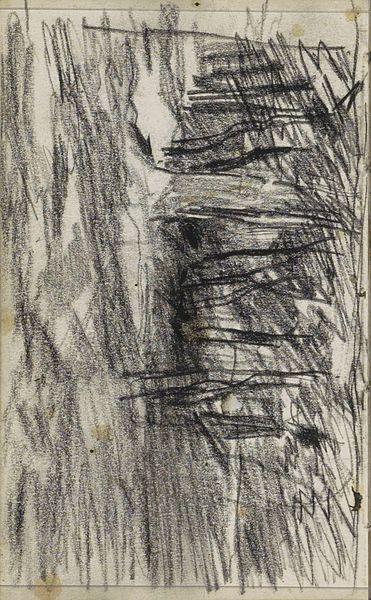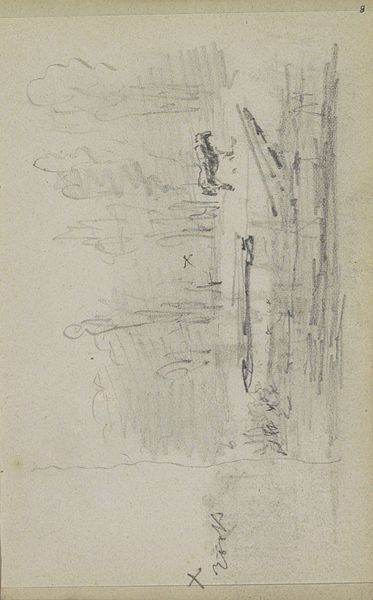
drawing, pencil
#
drawing
#
impressionism
#
pencil sketch
#
landscape
#
pencil
#
watercolor
Copyright: Rijks Museum: Open Domain
Curator: Anton Mauve's "Landschap met een ruiter bij een waterkant," created between 1848 and 1888, offers a glimpse into the 19th-century Dutch landscape, right here in the Rijksmuseum. Editor: It strikes me as a melancholic scene; the pencil and what appears to be watercolor create a hazy, almost dreamlike quality. The stark vertical lines cut the image into seemingly disjointed spaces. Curator: I agree about its dreaminess. Think about the power dynamics at play within 19th-century Dutch society, the lives dependent on agricultural land, the unequal access to resources that this scene, on the surface seemingly idyllic, obscures. Who owns that land? Who toils on it? The rider is but a detail, barely present in the scene. Is it representative of wealthy ownership? Editor: Interesting. I was immediately drawn to the texture, how the dense strokes on the left contrast with the open, almost empty space to the right, forming distinct halves with contrasting qualities. Curator: Indeed, the contrast echoes socio-economic disparities. Mauve situates the figure and landscape within a specific moment of labor exploitation. What does it tell us about their relationship with land, resources and power at the time? Editor: Focusing on composition, this contrast lends a striking visual dynamism. I am keen to learn about his application of form in translating this sense of division and the rider's relation to their location. It could also echo their limited possibilities within society? Curator: Exactly. By employing this rough and ready aesthetic he draws our eyes to the reality of life and social status at the time. What we might see as beautiful is also deeply rooted in material concerns. Editor: A reminder of the power inherent in landscape art, then; form echoing the landscape of lived experience and all the inherent unevenness it encompasses. Curator: An important dialogue on the value of context that allows us to decode its powerful historical messaging. Editor: Precisely. A layered study!
Comments
No comments
Be the first to comment and join the conversation on the ultimate creative platform.
